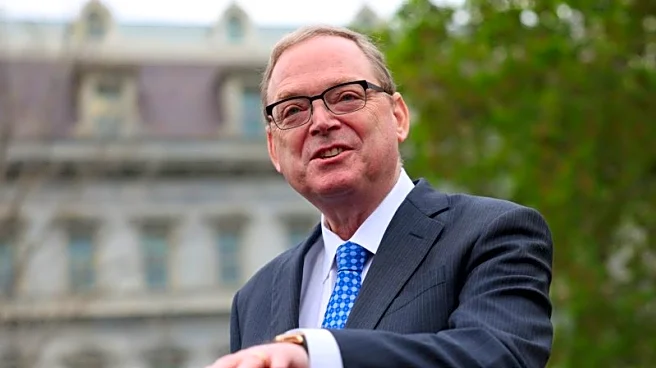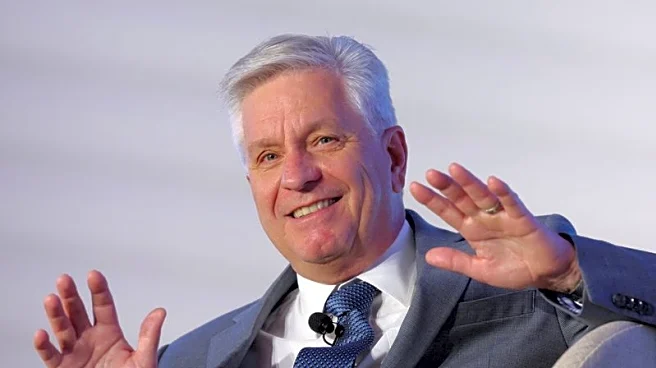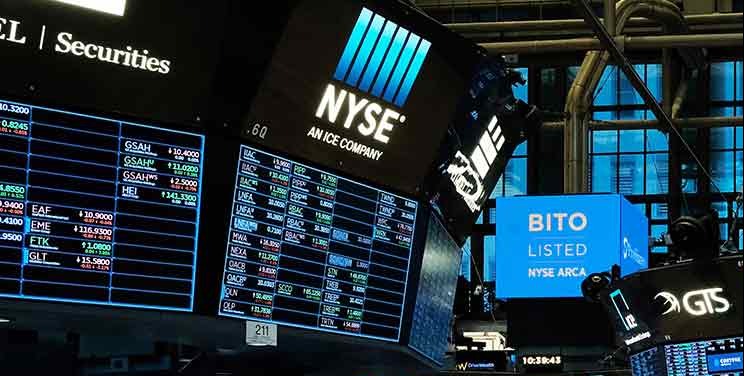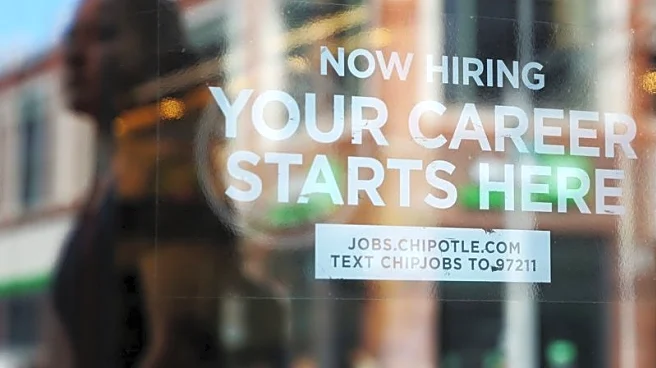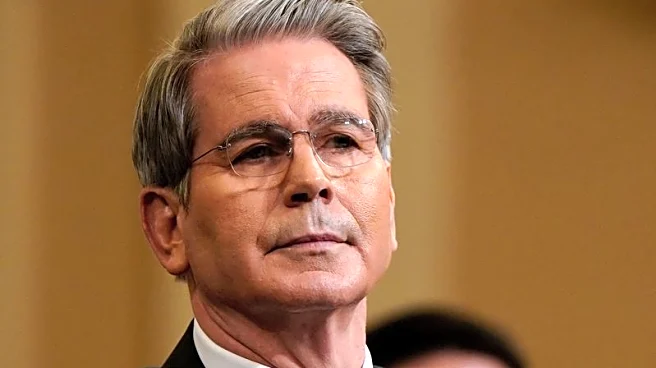What is the story about?
What's Happening?
The August jobs report has raised concerns among economists due to the addition of only 22,000 nonfarm jobs, significantly below the forecasted 80,000. The unemployment rate has risen to 4.3%, the highest since October 2021. The report suggests a faltering job market, partly attributed to tariffs imposed by the Trump administration and the rapid adoption of artificial intelligence by employers. President Trump criticized Federal Reserve Chair Jerome Powell for not cutting interest rates sooner, arguing that lower borrowing costs could stimulate job growth. Economists now anticipate a Federal Reserve interest-rate cut at the upcoming meeting on September 17, with discussions on the extent of the cut.
Why It's Important?
The weak job growth signals potential economic challenges, including the risk of stagflation—a combination of high inflation and weak growth. The average monthly job gains are at their lowest in 15 years, excluding the pandemic period. This slowdown in job creation raises concerns about the overall economic strength, with inflation remaining above the Federal Reserve's target. The anticipated interest rate cut by the Federal Reserve could influence borrowing costs, potentially stimulating consumer spending and business expansion. However, the effectiveness of these measures in reviving job growth remains uncertain.
What's Next?
Economists predict a Federal Reserve interest-rate cut at the September 17 meeting, with possibilities ranging from a typical 0.25 percentage point reduction to a larger 0.5 percentage point cut. The decision will depend on the Fed's assessment of the job market and economic conditions. Further rate cuts may be considered later in 2025 to address ongoing job market weaknesses. The upcoming Consumer Price Index data release could also impact economic forecasts, potentially heightening concerns about stagflation.
Beyond the Headlines
The broader implications of the jobs report include potential shifts in economic policy and trade strategies. The Trump administration's tariffs and trade deals are under scrutiny for their impact on economic uncertainty and job growth. Additionally, the role of artificial intelligence in the labor market raises questions about the future of employment and the need for policy adjustments to address technological disruptions.
AI Generated Content
Do you find this article useful?


